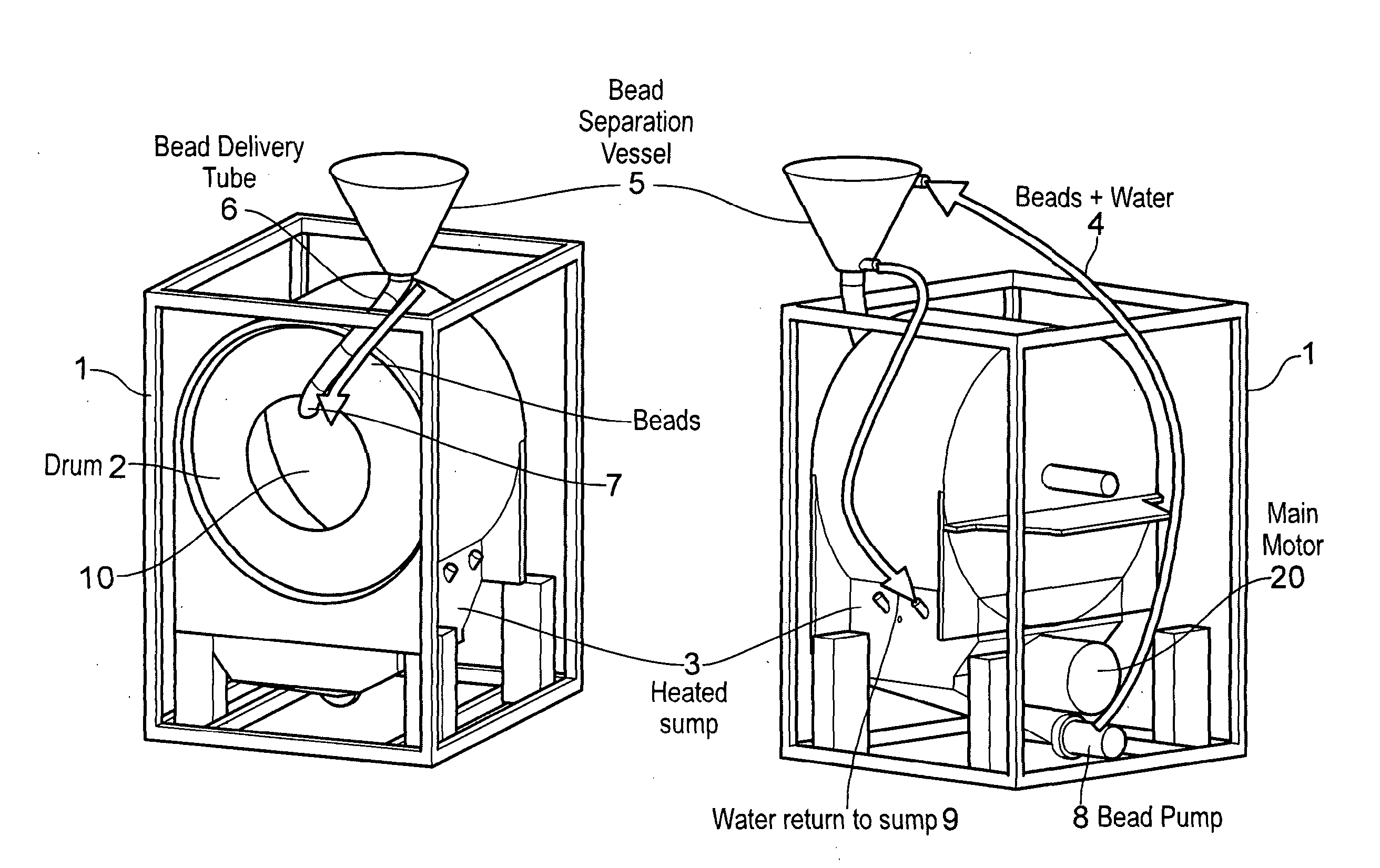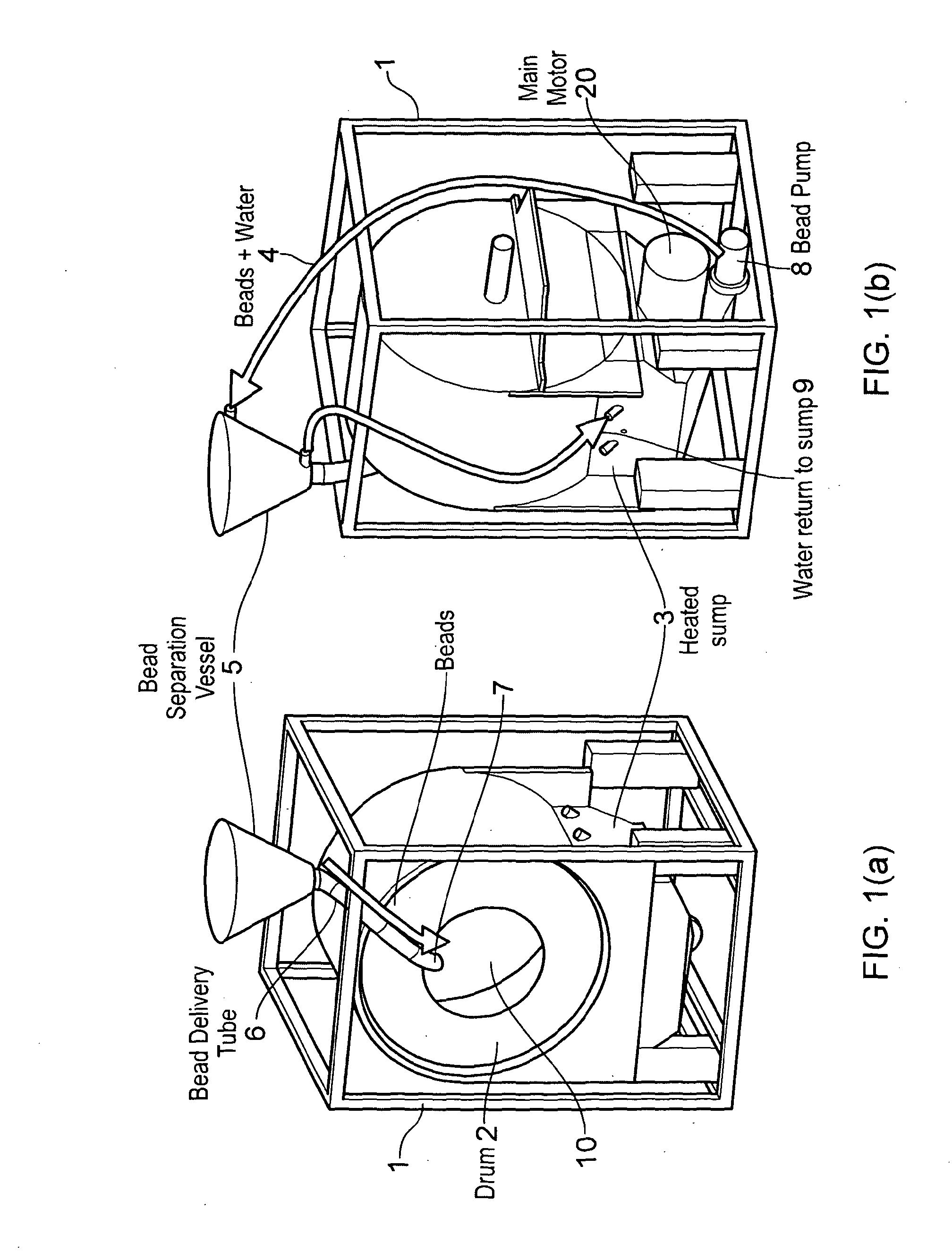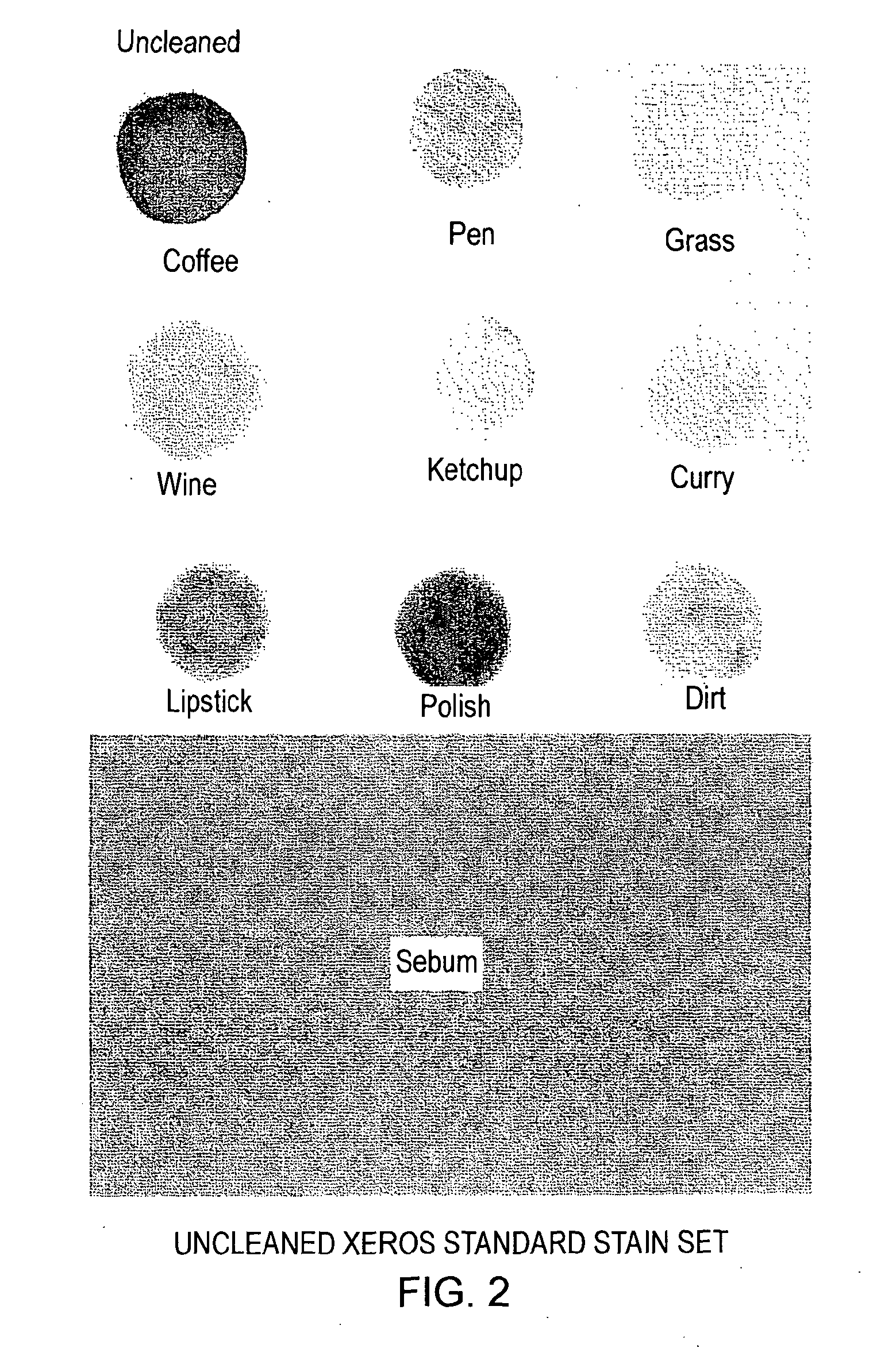Cleaning Apparatus and Method
a technology of cleaning apparatus and aqueous solution, which is applied in the direction of washing machines with receptacles, textiles and papermaking, other washing machines, etc., can solve the problems of increasing the difficulty of reducing the water level (and hence energy and detergent) in a pure aqueous process, and increasing the cost and environmental impact of the process. , to achieve the effect of improving the distribution of rinsing water,
- Summary
- Abstract
- Description
- Claims
- Application Information
AI Technical Summary
Benefits of technology
Problems solved by technology
Method used
Image
Examples
example 1
[0119]Woven cotton fabric (194 gm−2, Whaleys, Bradford, U.K.) was stained with coffee, lipstick, ball point pen, tomato ketchup, boot polish, grass, vacuum dirt, curry sauce and red wine following the methods described below:
[0120](i) Coffee
[0121]10 g of Morrisons® Full Roast coffee powder was dissolved in 50 ml distilled water at 70° C. A 1 cm3 aliquot of the ensuing solution was applied to the fabric using a synthetic sponge, within the confines of a 5 cm diameter circular plastic template; the stained fabric was then allowed to dry at ambient temperature (23° C.), after which the fabric was aged prior to use, by storage in the dark for 4 days.
[0122](ii) Lipstick
[0123]Revlon® Super Lustrous lipstick (copper frost shade) was applied to the fabric using a synthetic sponge to provide a uniform coverage within the confines of a 5 cm diameter circular plastic template. The fabric was then aged following the procedure recounted for coffee.
[0124](iii) Ball Point Pen
[0125]A black Paper Ma...
PUM
 Login to View More
Login to View More Abstract
Description
Claims
Application Information
 Login to View More
Login to View More - R&D
- Intellectual Property
- Life Sciences
- Materials
- Tech Scout
- Unparalleled Data Quality
- Higher Quality Content
- 60% Fewer Hallucinations
Browse by: Latest US Patents, China's latest patents, Technical Efficacy Thesaurus, Application Domain, Technology Topic, Popular Technical Reports.
© 2025 PatSnap. All rights reserved.Legal|Privacy policy|Modern Slavery Act Transparency Statement|Sitemap|About US| Contact US: help@patsnap.com



